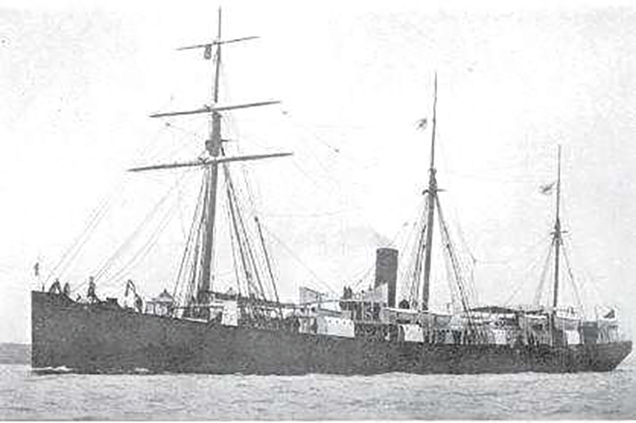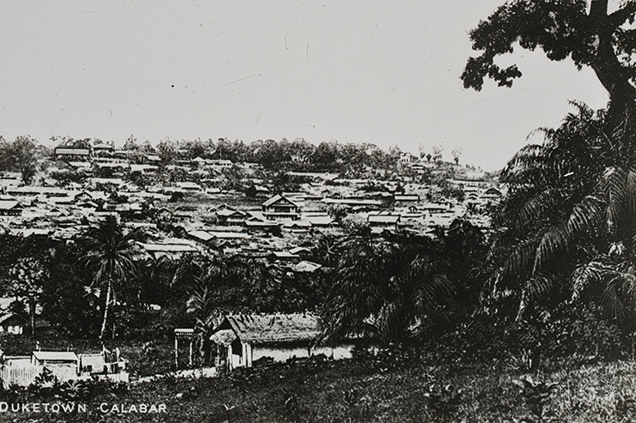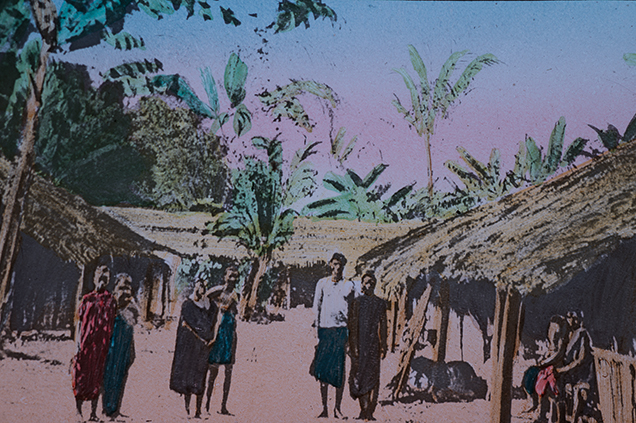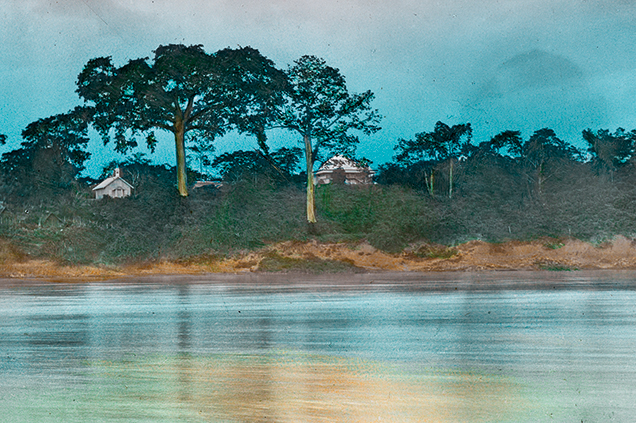Mary’s application to the Foreign Mission Board to go to Calabar was accepted. She travelled to Edinburgh for a three month training course in the skills that were thought to be important to become a missionary. Many of the practical skills that Mary already had as a skilled weaver and a resourceful woman having grown up in very difficult circumstances, were probably more useful for the life she was about to embark on.
Before she left Dundee, the congregation of the Wishart Church presented her with a gold watch.
On 5th August 1876 at the age of 28 she boarded the SS Ethiopia at Liverpool sailing to Duke Town in Calabar. The journey from Britain to West Africa in 1876 took about five weeks. Like most new missionaries at the time, she travelled with set ideas about the work to be done and some misconceptions about the native people and their country. Many of these ideas were about to change.

Dundee City Council, Dundee Art Galleries & Museums: Calabar mission fields map
First impressions of Calabar
The port at Duke town would have been busy with traders and other traffic as she arrived, but extremely different from the whaling and textile port of Dundee that she was familiar with. The blazing sunshine, tropical greenery and very different smells and sounds would have been an overwhelming contrast to what she was accustomed to. Mud huts of different sizes with woven roofs were the main form of housing.
The mission at Calabar had been established in 1846, so by the time Mary Slessor arrived there in 1876 it was a thriving place with many missionaries and other staff. Some of those who were there to greet her on her arrival had been in Duke Town for many years.
Mary set to work quickly teaching the children and working in the dispensary. She began to learn the local language, Efik, so that she could communicate with the local people. With red hair, blue eyes and a strong Dundonian accent, she would have stood out among the other missionary workers.
She soon began to adapt to the new environment, abandoning some of the Victorian dress styles which missionaries from Britain still wore, but were impractical for active work in a hot climate and she cut her hair short. She also ate the local food. Many missionaries ate food which had been transported from Britain, but this was expensive. She was sending money from her missionary salary back to Dundee to support her mother and two sisters and so tried to save as much as possible.





Mary sailed to Duke Town in Calabar on the SS Ethiopia
Dundee City Council, Dundee Art Galleries & Museums:
Duke Town, Calabar. Mary was based here for the first three years of her work as a missionary
Dundee City Council, Dundee Art Galleries & Museums:
Local people and housing
Dundee City Council, Dundee Art Galleries & Museums: Most travel at this time was on foot through dense jungle
Dundee City Council, Dundee Art Galleries & Museums:
Church and mission house at Ikot Ana, near the Cross River
5 - 5
<
>
Scottish Charity No. SC032781
© Mary Slessor Foundation 2016